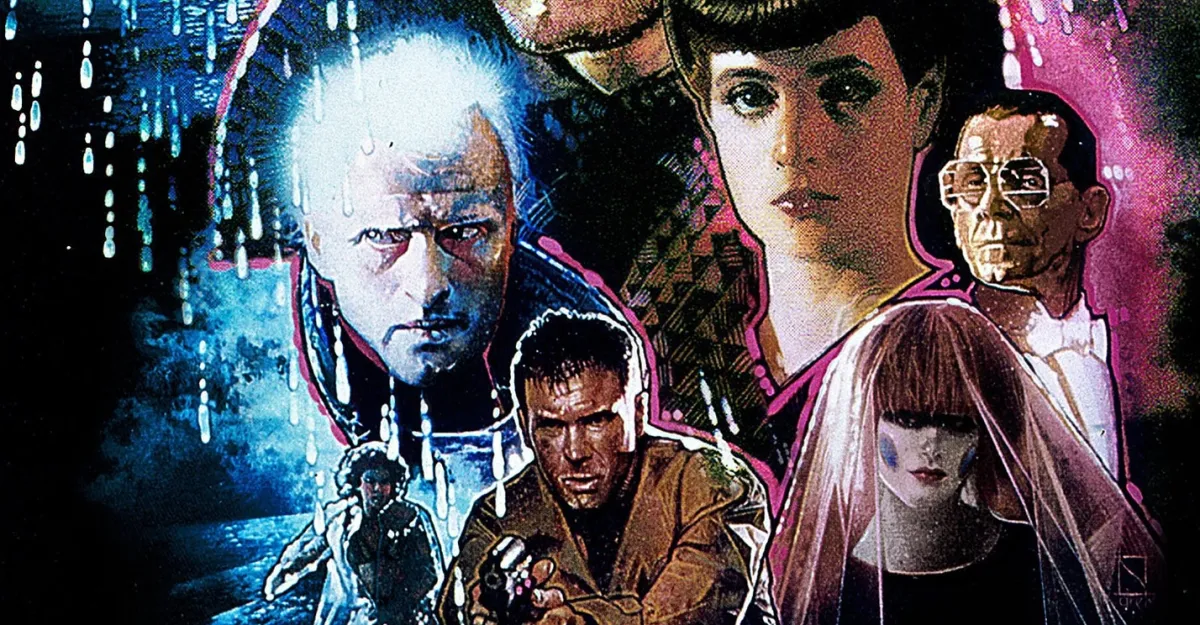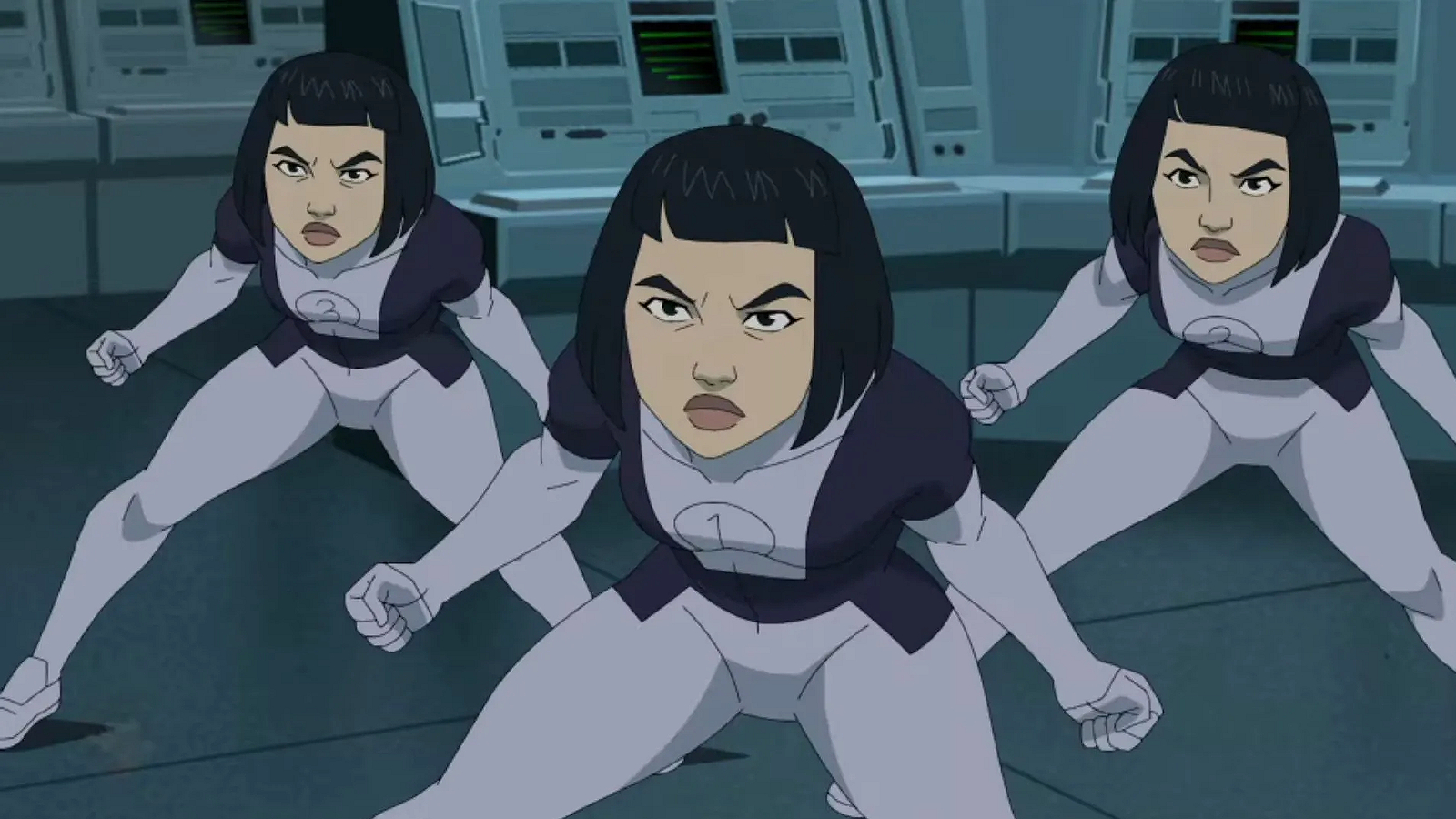Four decades since it was originally filmed, and seven different versions later, the influence of Ridley Scott’s Blade Runner (1982) still pervades the science fiction genre. It’s a neo-noir detective story where a bounty hunter, Deckard (Harrison Ford), stalks the android remnants of an off-world revolt, but the startling visuals, Vangelis’ iconic score, and the beguiling android performances are all discussed more frequently than the film’s screenplay, co-written by Hampton Fancher and David Peoples. But a fantastical world is only as interesting as how we’re guided through it, and the film’s opening sequence perfectly sets up not only the characters and world, but establishes the power dynamics of our characters, telling us what kind of people our heroes and villains are. In just five minutes, we make the first step on a journey that will ultimately reveal the true nature of this new kind of human.
Before we’re introduced to the world or characters, we’re treated to scrolling text that sets up our conflict. The androids are “REPLICANTS,” and their hunters are “BLADE RUNNERS.” One will pursue the other and will only be satisfied by their execution, or “RETIREMENT.” Vangelis’ score swells as Los Angeles 2019 is revealed, and it’s the most beautiful cityscape ever put on film. Millions of lights twinkle in a sea of darkness, flying cars race past the frame, and yet there’s no sign of life amongst the towering structures. It is a burning, blinding, lonely world.
In the skyline’s largest building, a Blade Runner named Holden (Morgan Paull) awaits engineer Leon (Brion James), who will be the subject of his interrogation. He’s running a test to see if Leon is one of the escaped Nexus-6 replicant fugitives who’ve made it to Earth. The scene unfolds across just under three minutes as Holden probes Leon and measures his emotional responses in what is dubbed a Voight-Kampff test. Leon is blunt, inquisitive, uncomfortable, gazing at the test equipment with wary suspicion as it rises and falls like a steady inhale and exhale. It looks like a machine that breathes — just like him.

Holden’s goal is to catch his subject off-guard to capture instinctive reactions that will reveal his inhumanity. He cuts off Leon’s ramblings with, “Reaction time is a factor in this, so please pay attention.” Holden thinks that because Leon is not as sharp as him, he’ll be able to throw him easily, but this is complicated by the fact that Leon is apparently too dim-witted to be thrown. As Holden starts explaining a situation where Leon is in a desert watching a tortoise struggle on its back, Leon cluelessly interrupts with “Is this the test now?”, frustrating Holden and making the conflict between them more pronounced.
With its harsh shadows and unforgiving lighting, the scene is a focused and compact battle. One side acts confused, while the other is increasingly irritated, and more than once the tension threatens to boil over. Dramatically, it’s electric, but even when the conflict is soothed it’s done in a way where one party holds the power. As Holden probes Leon with his tortoise torture story, he watches his subject’s bulging eyes and gawping mouth, before he pulls back and adopts a relaxed, almost mocking tone. “They’re just questions, Leon,” he says. “It’s a test designed to provoke an emotional response.” And I just got one, he’s thinking. The power dynamics have been reset, but on Holden’s terms. He’s got the control over the panicking Leon.
This characterizes the biases Blade Runners have been conditioned to have against replicants in the film. Deckard operates from a stance of condescension and disdain towards those he doesn’t see as real people, instead regarding them as ignorant machines that can be picked apart at his pleasure. When Rachael Rosen (Sean Young), a replicant who thinks she’s human, confronts him about the colossal existential crisis she’s confronted with after her own Voight-Kampff test, a disinterested Deckard callously lists her implanted childhood memories. It’s understandable why the replicants have such a hostility towards humans when it’s clear the humans don’t deem them worthy of respect or decency. The Blade Runners’ job is to provoke them until the ruse falls away and they reveal the secrets they’re hiding.

Back in the opening scene, Leon can’t afford to be provoked again. When Holden tries to delve further with, “Describe in single words only the good things that come into your mind about your mother,” Leon snaps. “Let me tell you about my mother.” Gunshots blow Holden’s body backwards, leaving a manically grinning Leon staring at the hole he’s just made in the wall.
This scene is textbook noir. The terse questioning and shifty answers clearly evoke the hard-boiled style of a detective trying to make someone reveal something they don’t want to, building towards an explosion of violence. The spinning ceiling fan and constant emission of cigarette smoke add to this feel, but the script is more concerned with what is revealed about the interiority of the characters than simply mimicking the stylizations of a genre.
What does shooting Holden reveal about Leon? That he came prepared to kill but was willing to play along with the test? His act of murder reframes the scene we’ve just seen; his behavior is now more inscrutable. Is he really stupid, or was he just putting it on? Leon is clearly not the smartest tool in the shed. When he asks why he’d be in the desert in Holden’s scenario, he’s told, “It’s completely hypothetical.” “But how come I’d be there?” Leon replies, showing he doesn’t quite know what “hypothetical” means. The scene’s conflict mostly derives from his intelligence falling short of Holden’s expectations, leaving us wondering that, if replicants are so advanced, why is Leon ostensibly so dense?
Do replicants think so little of humans that they have to act dumb to pass as one, or are we seeing Leon’s insecurities being triggered? It seems when he can’t convincingly or intelligently answer a question, his only response is to yield to brutish, violent sensibilities. But which is it really? This is a case where the lack of an answer is much more illuminating than a concrete one, because it reveals something fundamental about how this new type of life will be treated by the screenwriters.

John Yorke’s Into the Woods: How Stories Work and Why We Tell Them is a well-researched breakdown on the trends of storytelling throughout film and television, and when writing about characterization, he focuses on the necessity for contradiction in your characters. He argues it makes them more believable, as human beings are constantly contradicting themselves, but it also makes them more dramatically engaging, as it shows the inner war between projected facade and inner truth. “The conflict between how we wish to be perceived and what we really feel is at the root of all character,” he writes.
The replicants have this inherent contradiction. Leon’s goal, on the surface, is to assimilate into human life, deceiving them into thinking he’s one of them. But below that is a burning need to assert dominance over the humans, proving the replicants are superior. The pull between these two warring desires in Leon rises throughout this scene, before the darker, deeper urge triumphs in his act of violence.
Leon’s conflicting behavior illustrates how Fancher and Peoples approach bringing the replicants to life. In this film, humanity doesn’t mean acting kindly; it means acting like a real person, motivated by a variety of opposing factors. Leon and the other fugitives Roy Batty, Pris, and Zhora are all imbued with the same humanity that every three-dimensional character receives. If their interiority is as well developed as those of humans, then what’s the discernible difference between them?

The line between what is human and inhuman is pointedly, repeatedly blurred in Blade Runner. The dangerous replicants are entrancing and emotive, while the human law enforcement are unfeeling and cynical. Those who desire life the most are slain, all in favor of a status quo of lifelessness. The world of Blade Runner is vast yet claustrophobic, beautiful but inhospitable, a hazy, stifling world where everything is either smothered in darkness or blasted with neon light. It’s not a society where human life is particularly highly valued, especially for those living on the margins. It’s impossible to see how the replicants, who seek a world where their brutal dominance will be recognized, could find a home in a world where everyone is settling for just scraping by.
Leon’s murderous act, prompted by Holden’s probing and toying, is the point of no return for all the replicants, but the choice he makes here is a crucial first step on the story’s real journey — the question about whether or not replicants are human. We don’t get the answer until the climax, where we see a moment that mirrors our opening perfectly. In the final showdown between Deckard and Batty, the detective’s life is in the replicant’s hands, and everything a Blade Runner knows tells him that an android will choose to kill. But in a complete inversion of what Leon chooses, Batty spares Deckard and gives in to death.
Roy isn’t human because he chooses mercy, just as Leon isn’t inhuman because he chooses violence. As Deckard’s actions show us, being human doesn’t make you inherently a compassionate person, especially in such a futuristic hellscape where life is wholly miserable and meaningless. What makes the replicants human is their inner conflict, the choices they make that go against the feelings they’re concealing.
Roy proves he’s human by choosing mercy despite the rage and resentment he has for humankind. Leon reveals how alike he is to humans by breaking into violence as he tries to pass for something he detests while he is belittled by Holden. A turbulent interiority is what makes us human, and the film is bookended by the replicants battling their contradictory desires. The opening scene starts us off on the long road towards the replicants proving they’re a new, valid kind of life.












Published: Feb 18, 2021 8:00 PM UTC